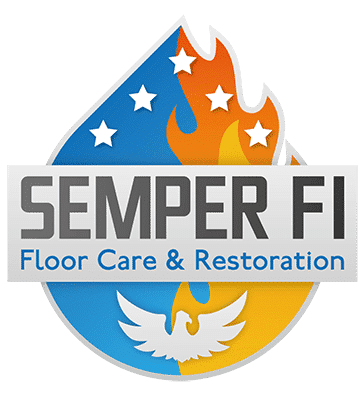Water damage is a common yet complex issue for homeowners and business owners alike. However, not all water damage is the same. One of the most critical distinctions to understand is the difference between water damage and flood damage, especially when it comes to your drywall. At Semper Fi Floor Care and Restoration in Yuma, AZ, we’ve seen firsthand how these two types of damage affect homes differently and why it’s crucial to treat them appropriately.
Understanding the nuances between water damage and flood damage can help you:
- Identify the source and severity of the problem
- Take the right course of action
- Work more effectively with insurance providers
- Preserve the structural integrity of your property
In this blog, we’ll explore how water damage and flood damage uniquely impact drywall, what signs to watch for, and how Semper Fi can help restore your property to its original condition.
Defining Water Damage and Flood Damage
What is Water Damage?
Water damage generally refers to destruction caused by water that originates within your property. This includes:
- Leaky pipes
- Overflowing sinks or bathtubs
- Roof leaks
- Appliance failures (like dishwashers or water heaters)
This type of damage is usually localized and contained, affecting a specific area of your drywall and often easier to clean up and repair.
What is Flood Damage?
Flood damage, on the other hand, occurs when water comes from outside your property. This can happen due to:
- Heavy rainfall
- Storm surges
- River or creek overflows
- Sewer backups
Flood damage is often widespread, affecting multiple rooms and levels of your home or building. It typically involves contaminated water (Category 3 or “black water”), which presents a serious health hazard.
How Water and Flood Damage Affect Drywall
1. Drywall Saturation Levels
Water Damage: Drywall exposed to clean water from an interior source may become damp, but if addressed quickly, it can often be dried and salvaged.
Flood Damage: Floodwater quickly saturates drywall and is typically contaminated, making it unsafe to preserve. Full replacement is usually necessary.
2. Contamination Risk
Water Damage: Clean water incidents pose minimal health risks if mitigated promptly. However, delayed drying can lead to mold growth.
Flood Damage: Floodwater often contains bacteria, chemicals, and waste. This makes the drywall not just wet, but toxic. Any affected drywall must be removed.
3. Drying Time and Techniques
Water Damage: With fast action, professional drying equipment can remove moisture efficiently. Walls may not need to be replaced.
Flood Damage: Because of the contamination and depth of saturation, flood-damaged drywall requires removal down to the studs. Specialized sanitation and drying protocols are needed before reconstruction.
4. Mold Potential
Water Damage: Mold can form within 24–48 hours if water isn’t addressed. Still, small leaks usually allow time for remediation.
Flood Damage: Mold is almost inevitable due to prolonged moisture exposure. Even if mold isn’t immediately visible, spores are likely embedded in materials.
5. Structural Integrity
Water Damage: Minor leaks might weaken the drywall slightly but usually don’t affect structural elements if caught early.
Flood Damage: Extended water exposure compromises not just drywall but also studs, insulation, and flooring. Structural drying and integrity assessment are essential.
Visual Signs: What to Look For
Water Damage Indicators:
- Yellow or brown water stains
- Bubbling or peeling paint
- Musty odors in localized areas
- Warping or soft patches on walls
Flood Damage Indicators:
- Extensive discoloration across large wall sections
- Visible mold or mildew
- Sagging ceilings and bulging walls
- Debris or silt lines
- Persistent foul odor despite cleaning
Insurance Implications: A Crucial Difference
Understanding the distinction between water and flood damage is especially important when it comes to insurance.
- Water Damage: Typically covered under standard homeowners insurance if it’s sudden and accidental.
- Flood Damage: Requires separate flood insurance. Most standard policies do not cover damage from natural flooding.
Failing to recognize and report the correct cause can result in denied claims or reduced coverage. At Semper Fi, we help document your damage and support you during the claims process.
DIY vs. Professional Restoration
While it might be tempting to address water damage on your own, there’s a significant difference in how DIY and professional restoration impact long-term outcomes.
Why DIY Might Not Cut It:
- Incomplete drying
- Missed mold colonies
- Inadequate contamination removal
- Poor structural assessments
Professional Benefits:
- Advanced moisture detection tools
- Safe removal of contaminated drywall
- Mold remediation
- Full drying and structural repair
At Semper Fi, we use state-of-the-art equipment and EPA-approved sanitation to ensure your home is fully restored—safely and thoroughly.
How Semper Fi Floor Care and Restoration Handles Water and Flood Damage
Whether your drywall is damaged from a leaky pipe or a flash flood, we bring expertise, care, and professionalism to every job. Here’s how we handle both:
For Water Damage:
- Immediate Assessment
- Moisture Mapping with Infrared Scanners
- Strategic Drying and Dehumidification
- Mold Prevention and Surface Restoration
For Flood Damage:
- Hazard Assessment and Contamination Control
- Complete Removal of Saturated Drywall
- EPA-Certified Cleaning & Disinfection
- Structural Drying, Mold Remediation, and Rebuild
Our team is available 24/7 and ready to act fast to reduce damage and prevent further loss.
Preventing Future Drywall Damage
1. Maintain Plumbing Systems
Regularly inspect for leaks, corrosion, or worn-out parts.
2. Install Sump Pumps and Backflow Valves
These prevent floodwater intrusion and sewage backup.
3. Improve Drainage Around Your Home
Ensure gutters, downspouts, and grading direct water away from the foundation.
4. Seal Cracks and Gaps
Properly seal windows, doors, and foundation cracks.
5. Use Moisture-Resistant Drywall
Especially in basements, kitchens, and bathrooms.
Conclusion
Water damage and flood damage may look similar on the surface, but they demand very different responses—especially when it comes to your drywall. Recognizing the type of damage is key to fast, effective, and safe restoration.
At Semper Fi Floor Care and Restoration, we’ve restored countless homes and businesses in Yuma, AZ. We understand the local climate, know the building materials, and bring the latest tools and techniques to every job. Don’t leave your property at risk—call us at (928) 228-4960 to schedule a professional damage assessment.
We’re here to help you bounce back—stronger, safer, and fully restored.
Semper Fi Floor Care and Restoration
Water Damage Restoration | Flood Cleanup | Mold Remediation | Yuma, AZ
Licensed & Insured | ROC# 349271
📞 (928) 228-4960
🌐 www.semperfiyuma.com
Don’t wait for water to destroy your walls. Call Semper Fi today.
Frequently Asked Questions (FAQs)
1. What’s the difference between water damage and flood damage?
Water damage typically comes from internal sources like leaking pipes or appliances. Flood damage, however, comes from external sources such as heavy rain, overflowing rivers, or storm surges. This distinction matters for cleanup methods and insurance coverage.
2. How does flood damage affect drywall differently than water damage?
Flood damage usually involves contaminated water, which penetrates deeper and carries harmful bacteria or chemicals. As a result, drywall affected by flooding almost always needs to be removed, while drywall with clean water damage may be salvaged if addressed quickly.
3. Can drywall be saved after water damage?
Yes, if the water is clean (Category 1) and the drying process begins within 24–48 hours. However, any signs of mold or prolonged exposure mean the drywall should be replaced for safety.
4. Is flood damage covered by homeowners insurance?
No—flood damage is not covered under standard homeowners insurance. You need a separate flood insurance policy. In contrast, sudden and accidental water damage from inside your home (like a burst pipe) is typically covered.
5. How can I tell if my drywall is water damaged?
Common signs include stains, soft or spongy texture, bubbling or peeling paint, and musty odors. With flood damage, you may also notice large-scale discoloration, warping, and visible mold growth.
6. What should I do if I suspect water or flood damage in my walls?
Turn off the water source if possible, avoid contact with any contaminated water, and call a professional restoration company like Semper Fi immediately. Early response limits damage and reduces health risks.
7. How quickly does mold grow after water or flood damage?
Mold can start to develop within 24 to 48 hours of moisture exposure. This makes immediate drying and professional remediation critical to prevent health hazards and structural damage.
8. Why hire a professional instead of doing it myself?
Professionals use advanced moisture meters, infrared scanners, and EPA-approved disinfectants to detect and eliminate hidden damage. DIY methods often miss contamination, leading to mold, odor, and recurring structural issues.


